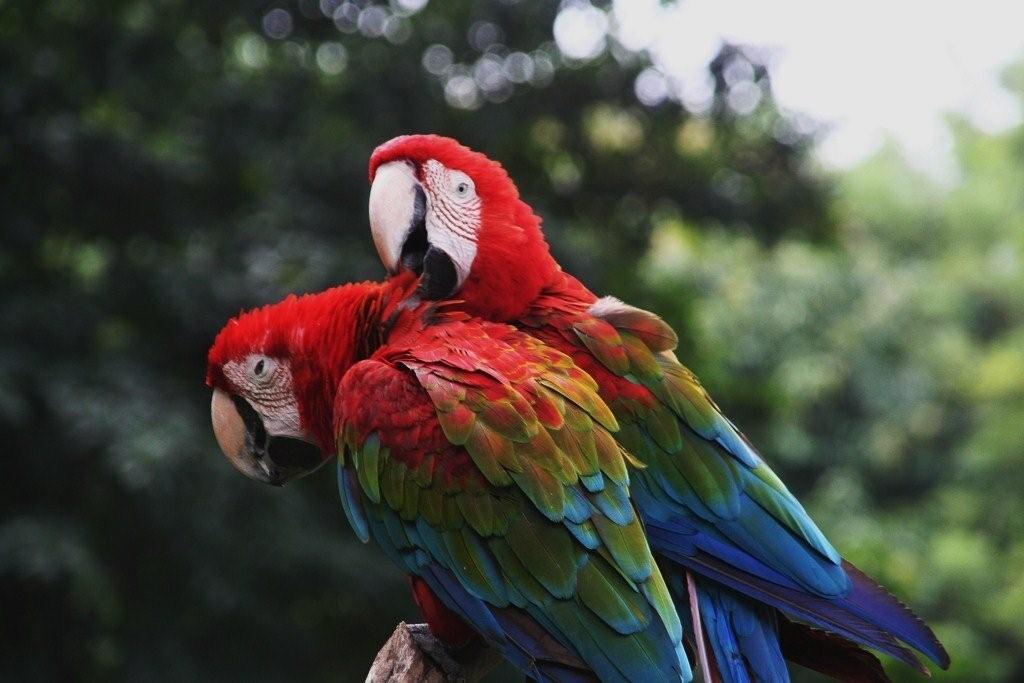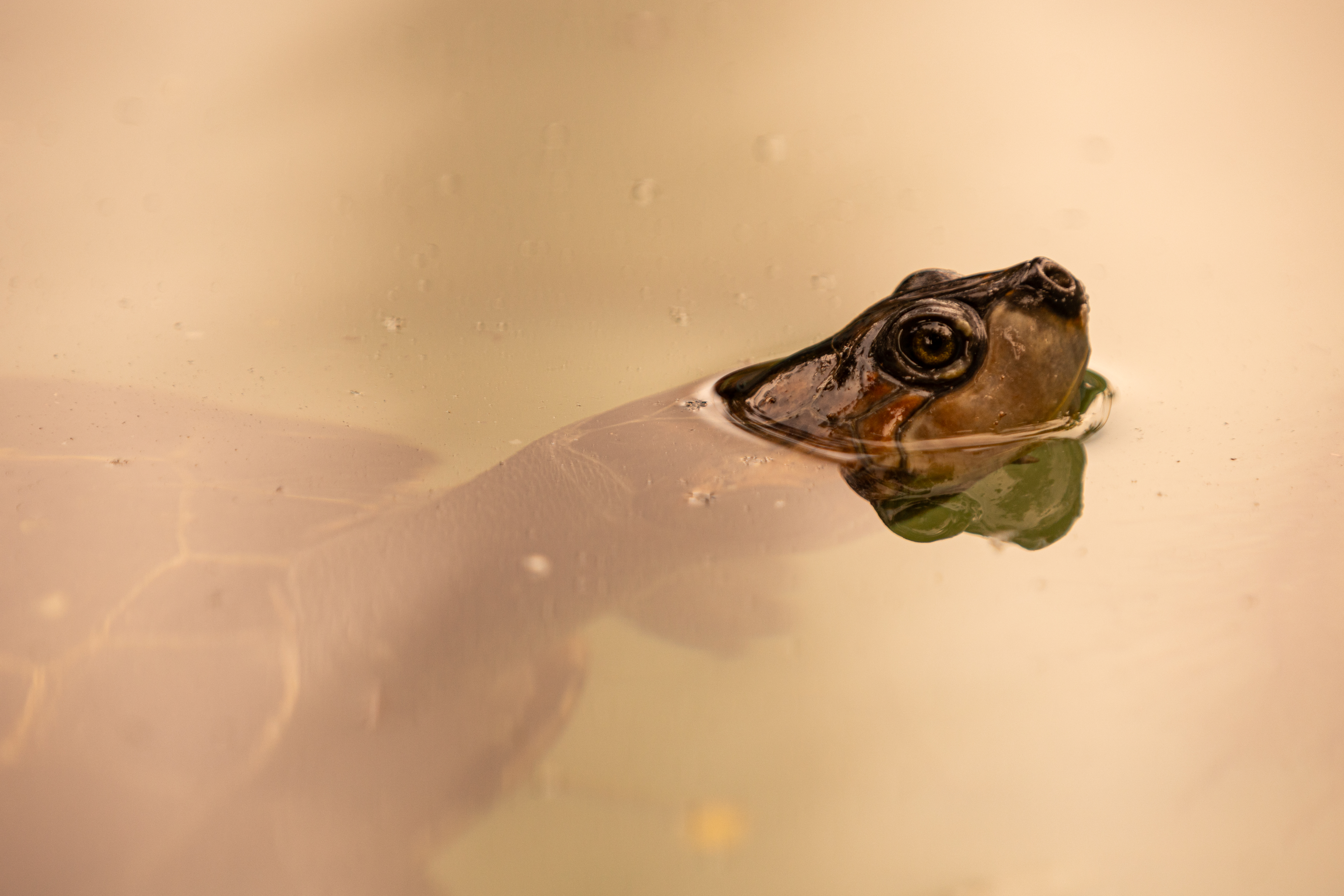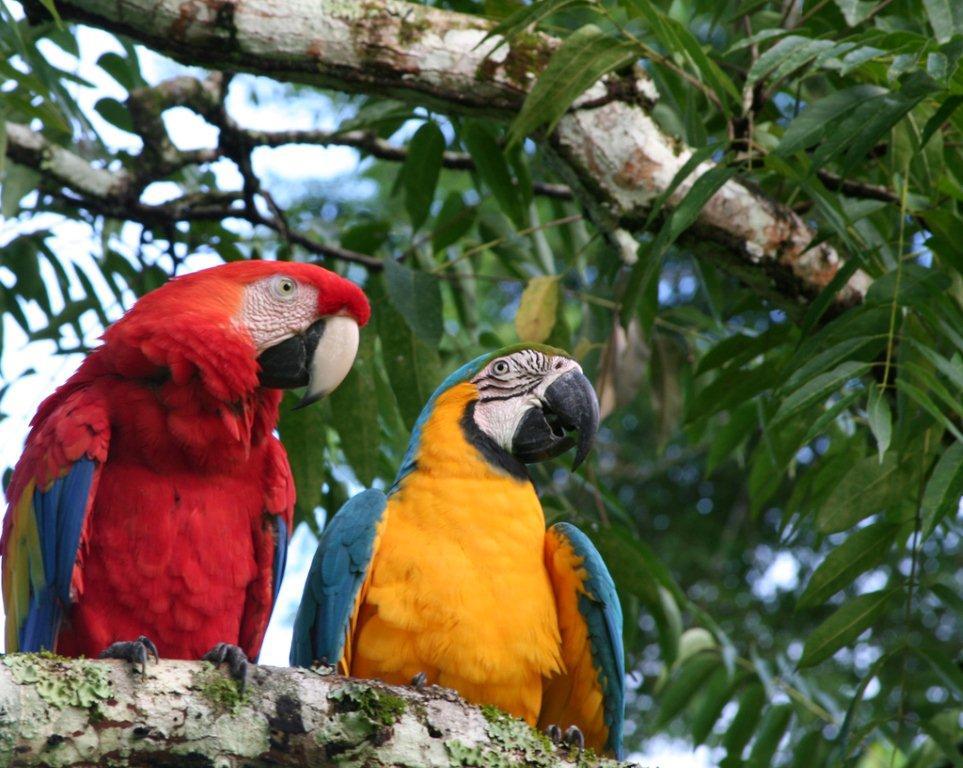
It has been a blue and yellow macaw day!
It’s amazing how many macaws we have seen today. It is not always like this. Sometimes we see a pair or two, yet we are always very happy when this happens. It is a privilege to see these fantastic birds free and flying in the air, giving us the chance to enjoy their colors and loud sounds.
Today we have seen more than 15 couples of blue and yellow macaws, as well as a pair of scarlet macaws. These are the 2 largest species of macaws in Peru!
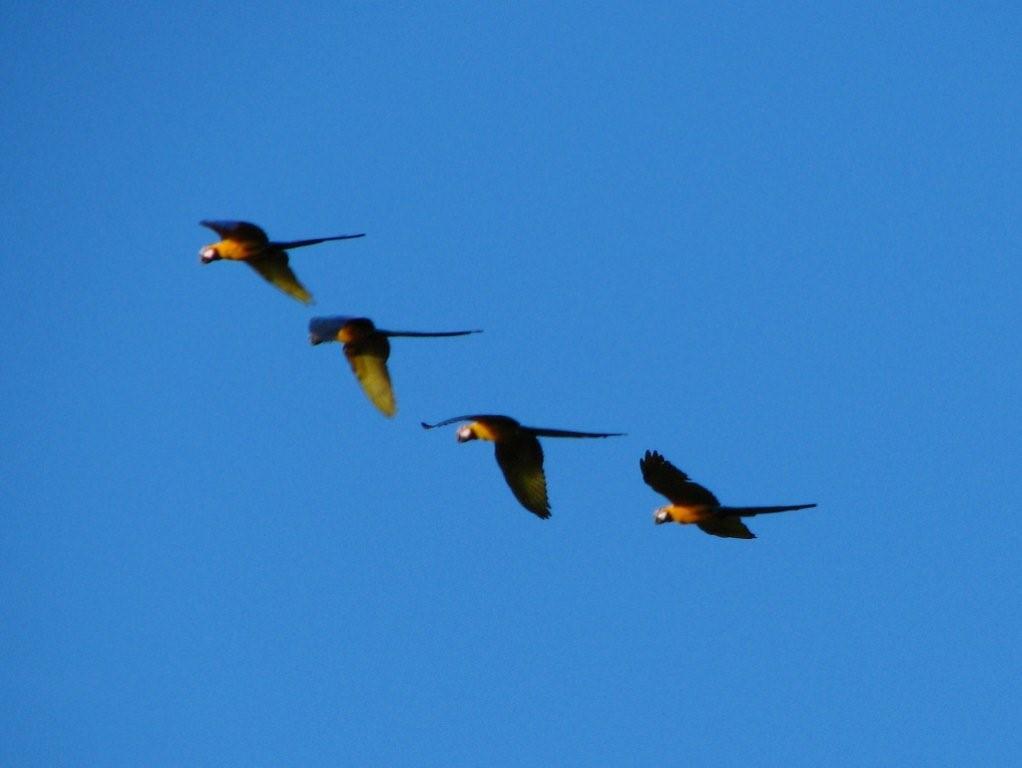
Macaws have the loudest voice of all parrots in Peru. You will inevitably hear them long before you can see them appear from a gathering of trees. Their slow but steady wing beats, together with their long tails, make them unmistakable.
Many species roost together at night in the protected parts of the forest. During early morning, you can see them flying together in pairs searching for fruiting trees. They may travel up to 75 kilometers (45 miles) or more in a day! In the afternoon, they start to head back from all directions in the Amazon to their roosting site. At certain times of the year, you will see them around high riverbanks to eat clay from the soil. A scientific explanation of this is that the chemicals of the clay aids digestion or helps counteract some of the potent toxins present in some fruits and seeds.
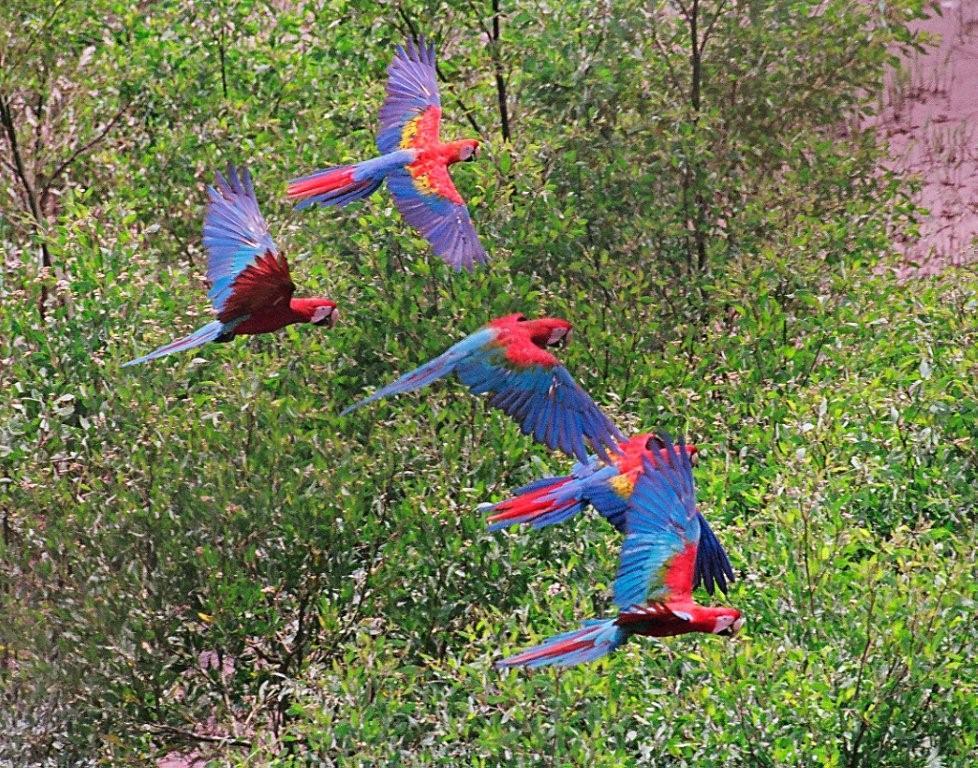
One of the most fantastic aspects of macaws is that they are monogamous, often pairing for life! If one becomes widowed, he or she will not mate again until he or she dies.
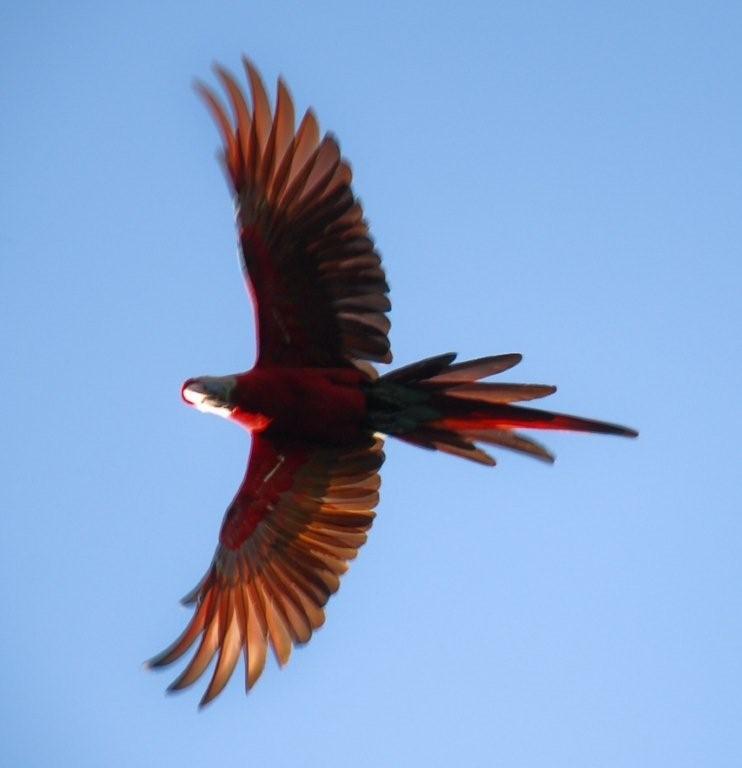
For every macaw that reaches marketplaces to be sold as pets, perhaps 50 die in the process. Without additional protection, and quickly, many more species may soon be threatened. So keep this in mind every time you see one in captivity. Macaws belong to the forest, and don’t buy tropical animals.
